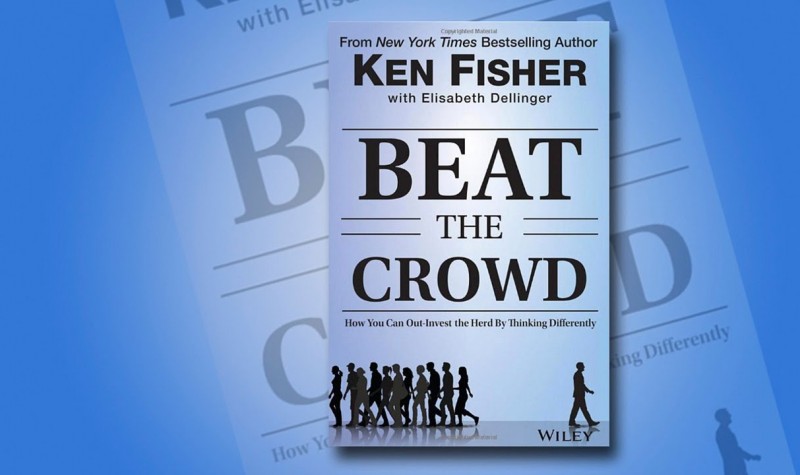Book Review: “Beat the Crowd: How You Can Out-Invest the Herd by Thinking Differently”

As seen in this month’s issue of Master Investor Magazine.
Wiley
£16.58 on Amazon (Hardback)
In his tenth book, investor and Forbes columnist Ken Fisher sets out to lend a helping hand to investors looking to chart a path to prosperity whilst being bombarded by media hype and other ‘noise’ on a daily basis. Beat the Crowd reveals how most investors fit into Fisher’s definition of ‘the crowd’ in one of two ways: either they succumb to the ‘herd mentality’ and simply follow the market consensus; or they are fooled into erroneously believing themselves to be a ‘contrarian’, simply because they take the opposite view to the current market consensus.
With a personal fortune of around $2.7 billion, Fisher is a successful investor in his own right and is certainly worthy of investors’ attention. He is also CEO of Fisher Investments, a firm which has been referred to as the largest wealth manager in the US (with over $50 billion under management). According to Forbes, Fisher’s investment recommendations made in his column for the magazine beat the S&P in eleven out of the fourteen years to 2010. Evidently a chip off the old block, Fisher is also the son of notable investor Philip A. Fisher, author of Common Stocks and Uncommon Profits.
Fisher operates from the standpoint that the consensus view is always priced – thus it is highly unlikely to materialise. ‘The Great Humiliator’ (TGH), Fisher’s apt pet name for the market, takes care of that. Instead of listening to what the financial media is talking about, Beat the Crowd urges us to ask what the market has overlooked. What is the ‘elephant in the room’? The one that has been standing there for so long that no-one even notices it anymore.
In 2008, Fisher explains, the elephant wasn’t the sub-prime mortgage crisis; it was the mark-to-market regulatory reforms brought in by Sarbanes-Oxley in 2002, which meant that banks and other financial institutions were forced to mark down ‘held to maturity’ assets and record massive losses, thus sparking a banking crisis. Yet the extent to which people are still misinformed as to the true nature of the financial crisis is revealing: most people still believe it was down to trading losses on the part of ‘casino bankers’, yet losses from proprietary trading made up a miniscule proportion of the total recapitalisation bill.
Similarly, the post-2009 recovery got economists and central bankers scratching their heads as to why it was so muted despite the fact that central bankers had initiated quantitative easing to lower borrowing costs and stimulate the economy. As Fisher explains, academically insulated central bankers had totally ignored the supply-side of the lending picture in their zealous commitment to QE. By pushing down long-term borrowing rates – i.e. flattening the long end of the yield curve – central bankers had denied commercial banks the ability to make a decent profit. No wonder then, that banks remained reluctant to lend more. All the while, the media frenzy was focused on the inflationary implications of QE, when in actual fact the real consequences were deflationary in nature. Again, that’s TGH in action!
Readers looking for an actionable formula from Beat the Crowd may be disappointed, however. Rather, the book sets out to teach investors to question their preconceptions and biases, and it is particularly heavy on behavioural finance (which is not particularly surprising given that this is one of Fisher’s specialties). Nevertheless, it is a truly worthwhile read, and Fisher conveys a real sense of insight and clarity in his writing that is quite rare in books of this type. On top of that, it is also an easy and light-hearted read, which again is something of a feat given the context; I managed to flick my way through in a few brief sessions stretched over a fortnightly period.
Master Investor Verdict: This book won’t provide you with any hard-and-fast formulas to investing success, but it might just help you begin to approach investment with a more critical eye. Beat the Crowd won’t bore you either; Fisher is a real veteran of the investment game and he’s seen it all. Just remember, this time almost certainly isn’t different!
Comments (0)